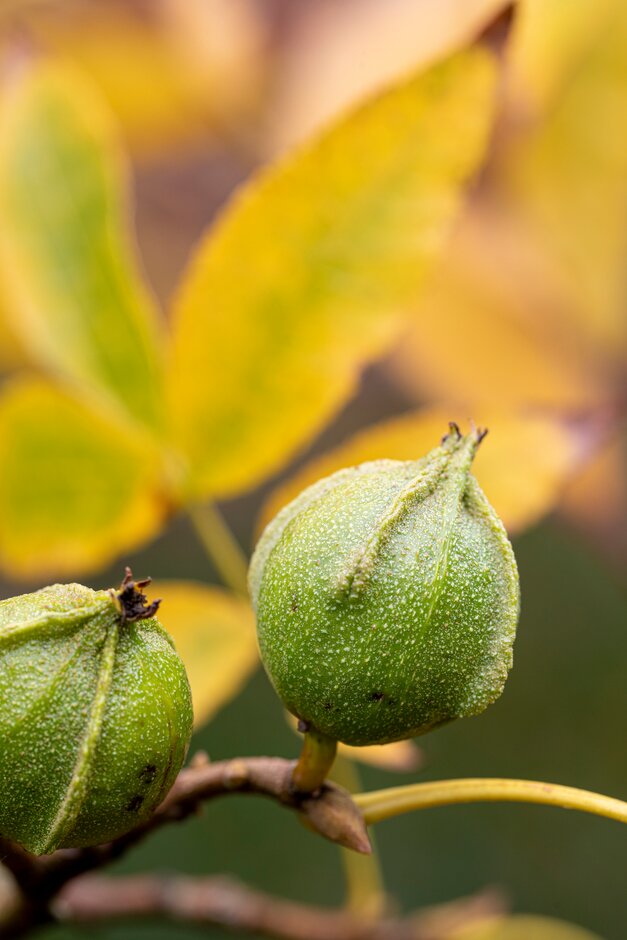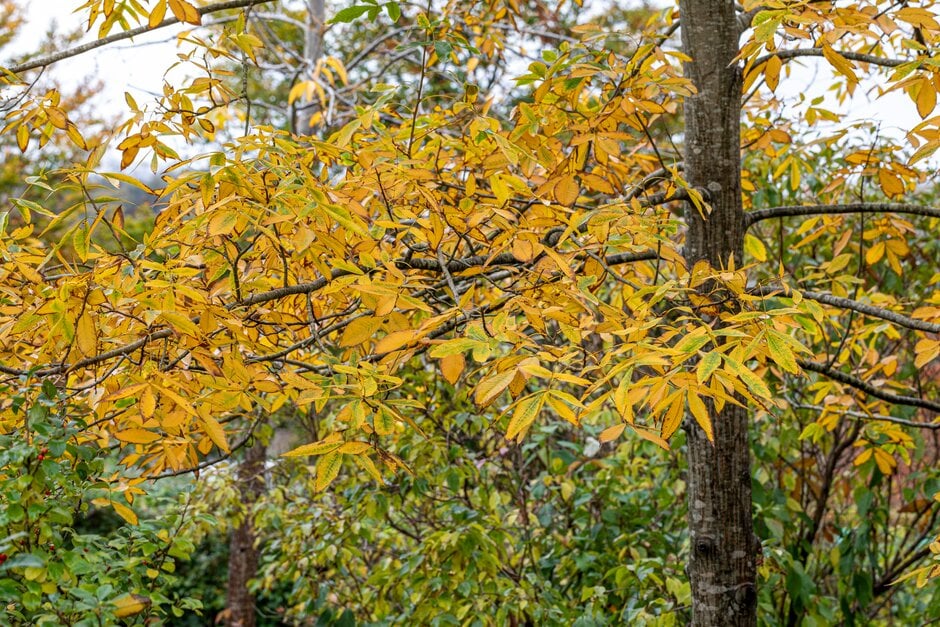Carya cordiformis
bitternut
A spreading, deciduous tree eventually reaching up to 25m tall. Large, dark green leaves up to 30cm long open from yellow winter buds and are divided into oval or oblong leaflets- usually seven but sometimes five or nine. Yellow-green spring flowers are followed by rounded or pear-shaped nuts 2-4cm long with an edible but bitter nut
Synonyms
Carya minimaCarya amara
Size
Ultimate height
Higher than 12 metresTime to ultimate height
20–50 yearsUltimate spread
Wider than 8 metresGrowing conditions
Moisture
Moist but well–drainedpH
Acid, Alkaline, NeutralColour & scent
| Stem | Flower | Foliage | Fruit | |
| Spring | Green Yellow | Green | Green | |
|---|---|---|---|---|
| Summer | Green | Green | ||
| Autumn | Yellow | |||
| Winter |
Position
- Full sun
- Partial shade
Aspect
South–facing or West–facing
Exposure
Sheltered Hardiness
H6Botanical details
- Family
- Juglandaceae
- Native to GB / Ireland
- No
- Foliage
- Deciduous
- Habit
- Spreading branched
- Genus
Carya are vigorous deciduous trees of handsome appearance, the large pinnate leaves colouring well in the autumn; male flowers are in catkins, females are insignificant spikes, followed by nuts, the kernels of some being edible
- Name status
Correct
- Plant range
- NE US
How to grow
Cultivation
Grow in a deep, fertile, humus-rich, moist but well-drained soil in full sun or partial shade
Propagation
Propagate by seed; seedlings rapidly develop a deep tap root and resent disturbance so plant out in permanent position in the first year
Suggested planting locations and garden types
- Low Maintenance
Pruning
Pests
Generally pest-free
Diseases
May be susceptible to crown gall, powdery mildews and leaf spot- see leaf damage on woody plants
Love gardening
Sign up to receive regular gardening tips, inspiration, offers and more
View our Privacy Policy
Get involved
The Royal Horticultural Society is the UK’s leading gardening charity. We aim to enrich everyone’s life through plants, and make the UK a greener and more beautiful place.

